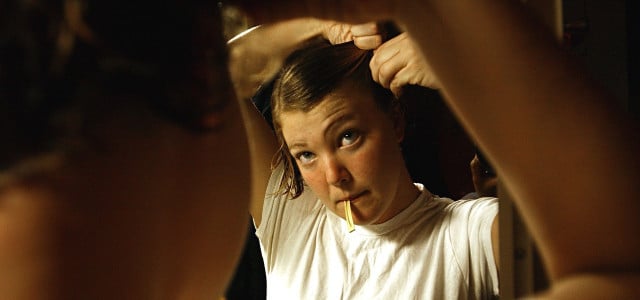Our bathroom routines can significantly impact our health, our wallets and the planet. Ditch these 12 harmful habits and products to protect yourself and the Earth.
Every morning we spend crucial time in the bathroom showering, brushing our teeth and preparing for the day. Likewise, it’s often our last stop in the evening as we rinse off the day’s dirt and get ready for bed. However, important as they are, our daily hygiene practices and skin care routines frequently include far more toxic chemicals and wasteful plastics than we think.
As we see mounting evidence of climate change worldwide, it’s important to remember we have the power to make sustainable and eco-friendly decisions in our day-to-day lives. The bathroom is a simple and low-pressure place to start. Below, we’ll discuss the 12 items and habits to ban from your bathroom for a greener, healthier, more sustainable home.
You may also like: 10 Things To Ban From Your Kitchen
1. Microplastics
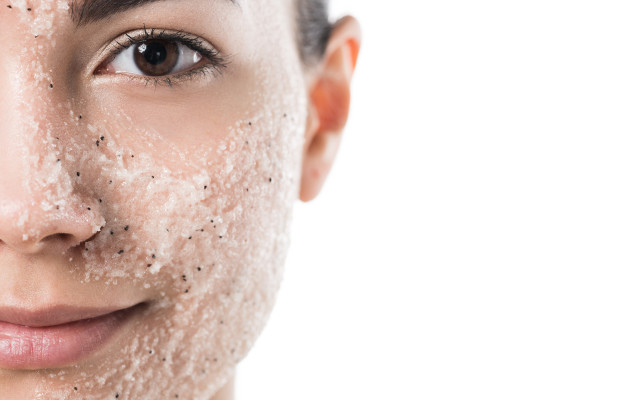
Microplastics are tiny plastic particles in many popular cosmetics, body scrubs, shower gels and shampoos. They’re also found in single-use plastics. Because sewage treatment plants can’t filter microplastic effectively, it enters oceans and large water bodies almost unhindered. There, it accumulates with other environmental toxins, ending up in the stomachs of wild animals. Furthermore, concerning new studies on microplastics reveal that microplastics can now be found in our blood.
Microbeads, the tiny bits of plastic in many exfoliating body care products, have already been banned in the UK, Canada, France and Sweden. Until these laws catch on in the US, steer clear of any products with exfoliating beads.
Solution: When possible, stick to natural cosmetics and personal hygiene products. If you use exfoliating face wash, swap it for a non-exfoliating version and start using a facecloth. Facecloths give you physical exfoliation without tearing your skin. You can also make it a habit to scan ingredient lists; avoid the ones below, which indicate the presence of microplastics:
- Polyethylene (PE)
- Polypropylene (PP)
- Polyethylene terephthalate (PET)
- Polymethyl methacrylate (PMMA)
2. Liquid Soap
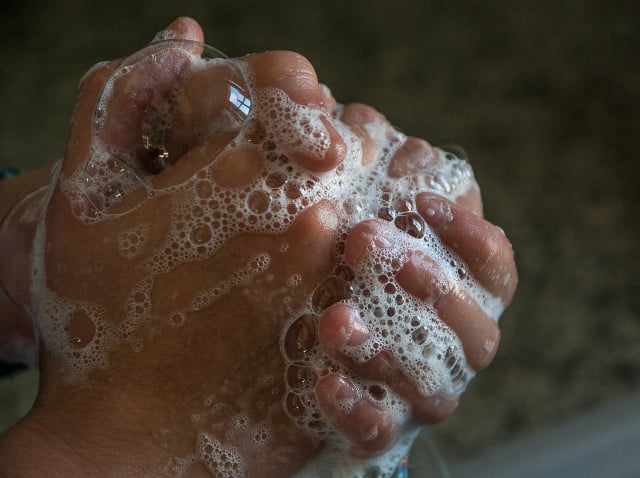


Unless you refill your liquid soap bottles from zero-waste shops, you’re likely buying a new plastic bottle every time you need more. That creates a ton of unnecessary waste.
Solution: Solid bar soap works just as well, and you can buy it plastic-free without taxing our already overburdened landfills. There are lots of natural bar soap brands to choose from in drugstores and online. You can also save money and have more control over your bathroom products by making homemade bar soap or refilling reusable glass jars with DIY foaming hand soap.
3. Flushing With the Toilet Seat Up
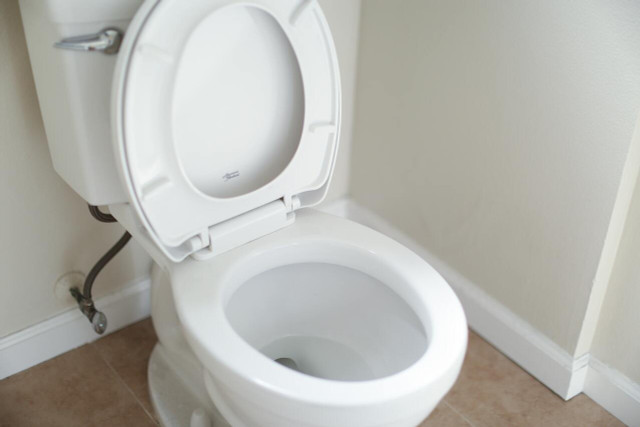


This one might haunt you. Research shows that toilets, when flushed, emit a “strong chaotic jet” of liquid aerosols into the air. This aerosol plume spreads rapidly and can reach up to five feet above and around the toilet in just eight seconds. The largest droplets, still invisible to the human eye, settle on surfaces within seconds, while the smallest can remain airborne for several minutes.
What does that mean? Well, that cloud of vapor particles contains bacteria and other pathogens from fecal matter. These pathogens include coronavirus, E coli, norovirus, C difficile and salmonella, which can live under toilet rims for up to 50 days.
Solution: Do you want microbes and disease-spreading bacteria in your lungs and on your toothbrush and towels? If not, start flushing with the toilet seat down.
4. Skin Care Products with Sketchy Ingredients
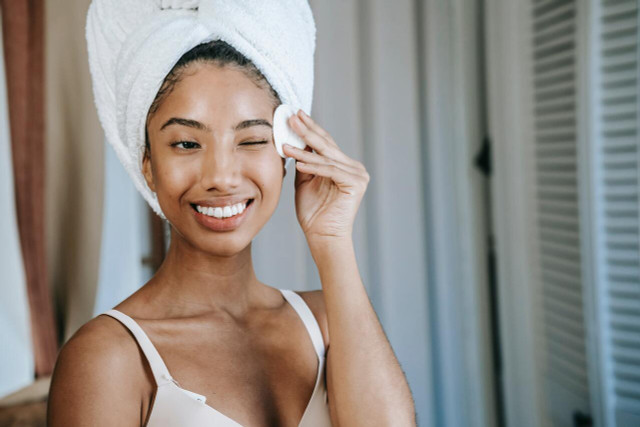


Every day, American women use 12 body and skin care products containing roughly 168 chemicals. While American men use fewer products, they still put about 85 chemicals on their bodies daily.
Though chemicals aren’t inherently bad, more than 73,000 products on the shelves today contain chemicals linked to cancer, birth defects and infertility. According to the Environmental Working Group, a scientist-led nonprofit focused on protecting public health, these are the main ingredients to avoid:
- Formaldehyde
- Paraformaldehyde
- Methylene glycol
- Quaternium 15
- Mercury
- Dibutyl and diethylhexyl phthalates
- Isobutyl and isopropyl parabens
- PFAs
- M- and o-phenylenediamine
Solution: Checking the labels on every single cosmetic and skin care product can be time-consuming, not to mention annoying. Generally speaking, the more listed ingredients you can pronounce, the better. It’s getting easier to find products that prioritize avoiding harmful chemicals; however, it’s also getting easier to be duped by greenwashing.
Luckily, we’ve done a bit of the work for you. Check out Utopia’s recommendations for safe and eco-friendly skin care, along with some more information about unhealthy chemicals in our article Problematic Ingredients in Cosmetics.
5. Products Tested on Animals
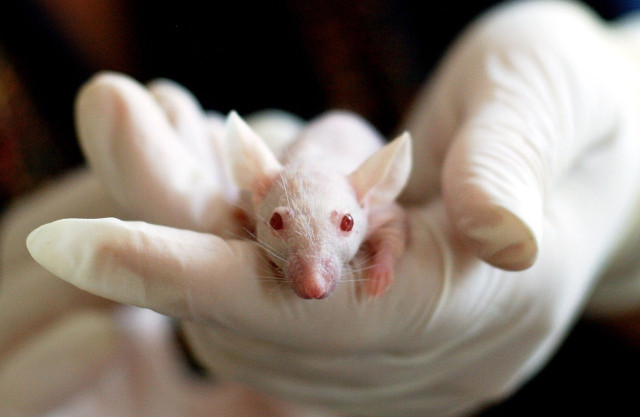


Although animal testing is now banned in 41 countries worldwide, including the entirety of the EU, the US and some other large countries have been slow to follow suit. These days, animal testing can include forced feeding, blood experiments, suffocation, imposed blindness and gene mutation — and it’s no longer necessary. There are numerous alternatives to these cruel testing procedures, many of which more closely approximate human responses to cosmetics and skin care products.
Solution: Animal testing has now been banned in 10 states. Until laws catch up in the rest of the country, look for the Leaping Bunny logo to signal cruelty-free cosmetics and household products, or download the app. Alternatively, you can make a number of your skin care products at home, including all-natural face wash, facial toner, makeup remover and makeup brush cleaner.
6. Chemical Cleaners
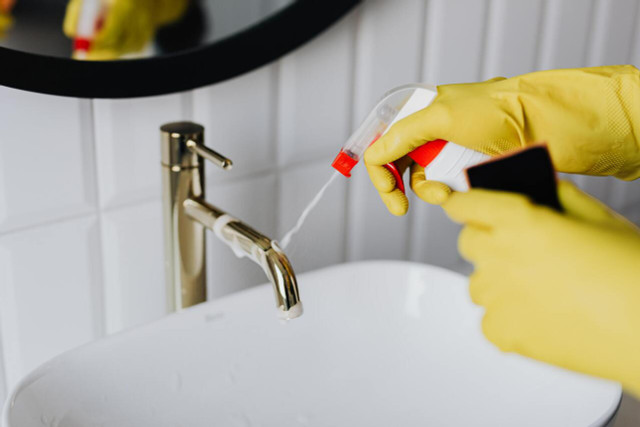


To truly go eco-friendly in the bathroom, ditch the toxic chemical cleaners. While traditional, chemical-laden cleaning products are effective, they can contain harmful substances like sodium hydroxide or sodium hypochlorite, which damage drains and our health. Furthermore, some cleaning products shouldn’t be mixed together and produce toxic chlorine gasses when used in the wrong combination. Considering bathrooms tend to be poorly ventilated, do you really want to be breathing that in?
Solution: There are more and more green cleaning supplies available on the market, so you shouldn’t have trouble finding ones containing all-natural, organic ingredients. You can also make effective cleaners from household products like baking soda and apple cider vinegar to save money and reduce plastic packaging.
Here are some easy guides to get you started:
- The Best Way to Clean Tile Floors
- How to Clean Your Shower Curtain
- DIY Cleaning Solution for Mirrors
- How to Remove Soap Scum
- Homemade Toilet Bowl Cleaner
- Remedies for Clogged Drains
- The Best Way to Clean Bathtub
- Citric Acid for Cleaning
- Homemade All-Purpose Cleaner
- How to Clean Grout
7. Aerosol Sprays
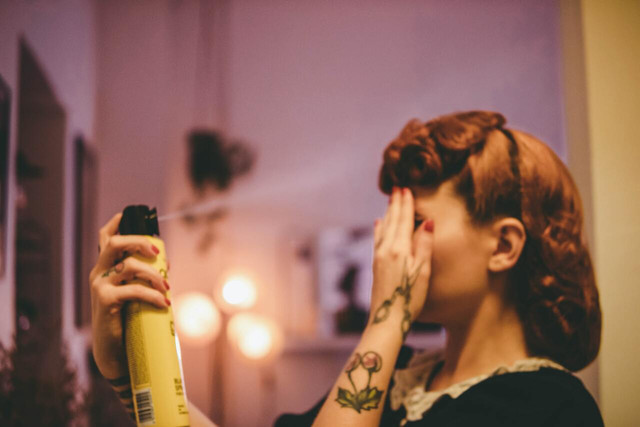


There’s no doubt that aerosol products are convenient. However, they’re disproportionately hard on the environment. Chlorofluorocarbon propellants (used as refrigerants) were removed from aerosol sprays after scientists realized they were eating a hole in the ozone layer. Many people think that the issue is over. After all, the ozone layer is healing itself — what more could we ask for? Unfortunately, there’s more to the problem.
Over 90 percent of aerosol emissions are volatile organic compounds (VOCs) — major sources of air pollution. VOCs can also cause a whole swath of health problems. Furthermore, the metal cans are often difficult to recycle as many recycling facilities refuse to take pressurized cans for fear of damaging their equipment.
Solution: This one is simple. Whether you’re buying hair spray, cleaning supplies or air freshener, choose non-aerosol options.
8. Flushing Non-Flushables
Your toilet isn’t a garbage can. Don’t flush anything not intended to be put down the drain. That means no leftovers, no wet wipes, no paper towels, no flushable kitty litter and no old medicines. Sewage treatment plants can’t filter out all chemical substances and pharmaceuticals, so many end up polluting oceans and waterways, contributing to coral bleaching and the death of sea life.
Solution: This is another straightforward one. Dispose of old drugs appropriately (when in doubt, you can usually take them back to the pharmacy), compost what you can and throw condoms, dental floss, hair and other detritus in the garbage or recycling bin as appropriate.
9. Unnecessary Plastic Packaging
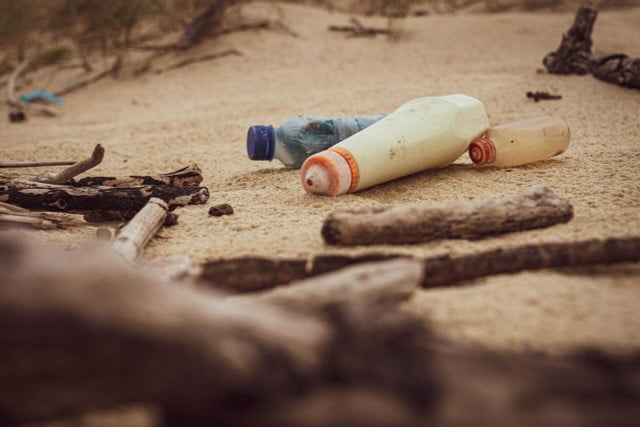


Shampoos, shower gels, toothbrushes, face creams, cotton pads — our bathrooms are full of unnecessary plastic packaging. It leads to a ton of waste, no small part of which ends up as plastic pollution in the ocean. Whenever possible, the goal should be life without plastic — but where do we start?
Solution: Overpackaging is difficult to avoid, but it’s easiest to overcome by replacing one item at a time with a sustainable alternative when it runs out. Consider shampoo bars instead of bottled, zero-waste toothpaste, DIY body wash or switching to zero-waste makeup or eco-friendly menstrual products.
For more inspiration, read Zero Waste Bathroom: Tips for Using Less Plastic.
10. Long, Hot Showers
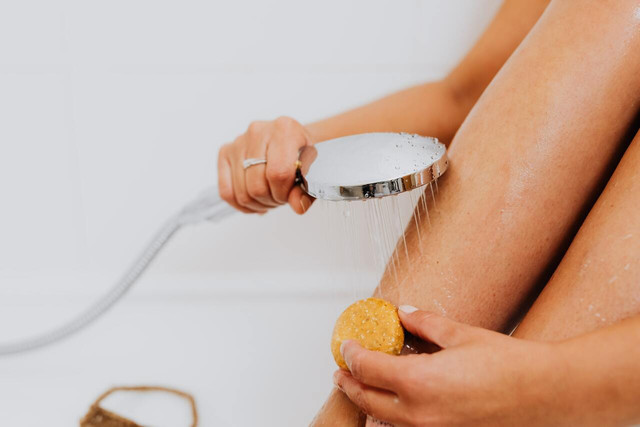


Heating water requires a lot of energy. Depending on your setup, it can also cost quite a bit of gas or electricity. That said, when it comes to whether showers or baths are more sustainable, showers are typically better in terms of water consumption. According to the EPA, the average shower lasts about eight minutes and uses 16 gallons of water (roughly 2.1 gallons per minute).
Solution: If you can’t conceive of life without long showers, consider switching to baths instead. Or, shower less often. If your shower takes a while to heat up, use the running water to feed your plants or fill up your water filter or water bottles for the day.
For more information about managing water consumption, read: 10 Mistakes That Keep Everyone From Saving Water.
11. Flushing “Fresh” Toilet Paper
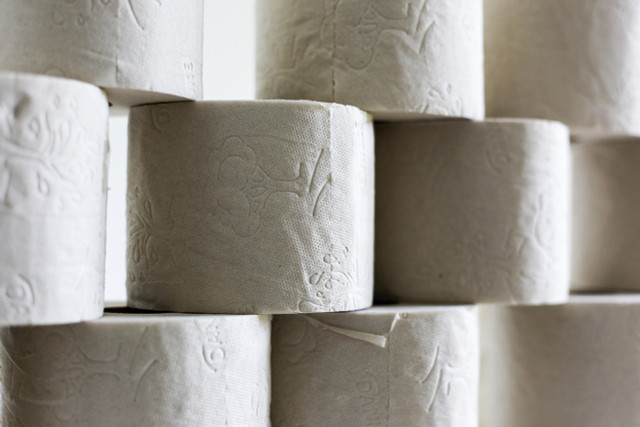


The average American uses 23.6 rolls of toilet paper a year, with the US going through an annual 36.5 billion rolls altogether — roughly double the international average. That adds up (to 7.7 million trees, to be exact) and has a major impact on the environment.
Traditional “fresh” toilet paper from standing trees contributes to deforestation throughout North America, Latin America and rare old-growth boreal forests in Canada. Toilet paper production also requires significant water consumption (a staggering 76 gallons of water per roll), and the chemicals used can pollute local water sources.
Solution: There are some excellent eco-friendly toilet paper brands available, and more are cropping up all the time. Greenpeace USA has also compiled a handy recycled tissue and toilet paper guide.
Or, you could ditch the TP altogether and opt for a bidet. Not only are bidets far more pandemic-friendly (toilet paper shortage, anyone?), but in the bidet vs. toilet paper debate, bidets come out the clear victor in terms of environmental impact and cleanliness.
12. Disposables
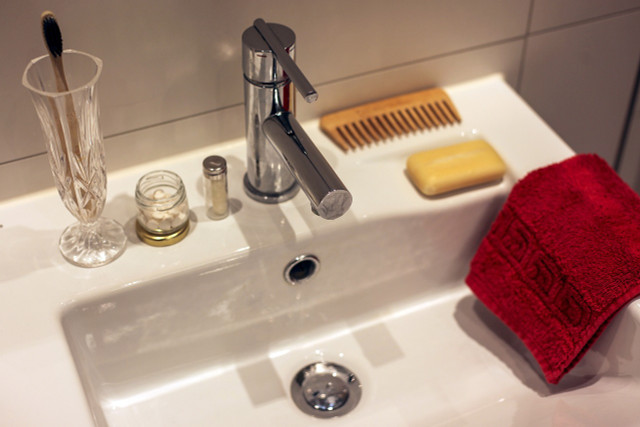


The only truly disposable things in your bathroom should be toilet paper and dental floss. You can replace almost everything else with sustainable, reusable alternatives.
Solution: Swap paper towels and wipes with cloth rags — old, threadbare clothing can be cut into squares perfect for household cleaning. Check out if there are any zero-waste or package-free shops in your area, and start refilling your cleaning and personal hygiene products. You can also switch to safety razors (available on Amazon**), sustainable period products, zero-waste toothpaste or DIY mouthwash.
Read more:
- Meat Glue: Is This Controversial Additive in Your Food?
- 7 Tips for Living More Sustainably Without Breaking the Bank
- 10 Solutions to Water Pollution in Our Daily Lives
- What Are Compost Toilets and How Do They Work?
Do you like this post?







